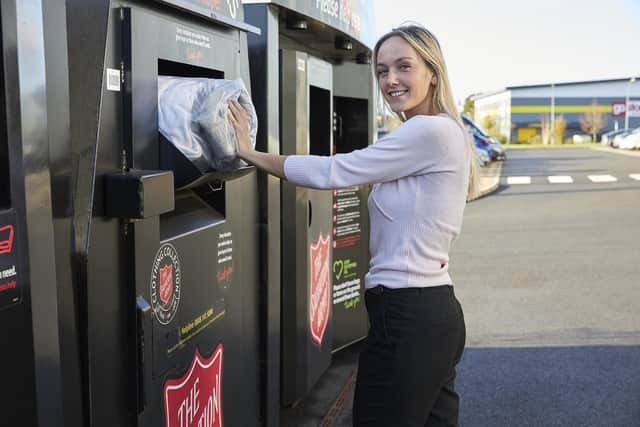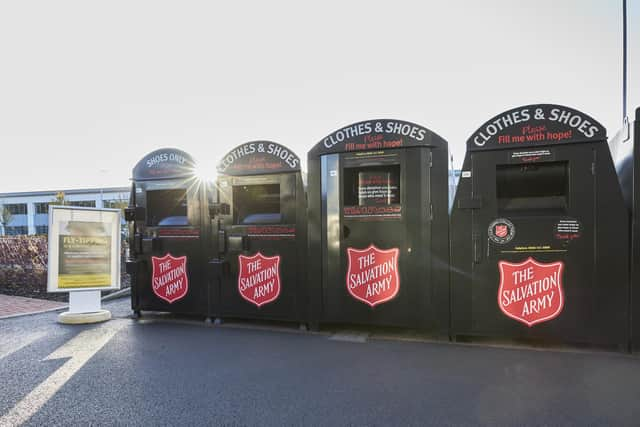Wellingborough-based SATCol using new technology to sort clothes so more can be repurposed and resold
and live on Freeview channel 276
SATCoL, the trading arm of The Salvation Army which is based on Wellingborough’s Denington industrial estate, is using a new automated, advanced sorting system to help recycle and reuse more items.
SATCoL is the largest charity-owned textiles collector in the UK working to support organisations reduce their carbon footprint.
Advertisement
Hide AdAdvertisement
Hide AdIt is now using Fibersort, which maximises the potential of charitable textile donations by creating more opportunities for garments to be repurposed and diverted from landfill in an effort to reduce the environmental impact of textiles.


The profits received from the resale of the donations is given to The Salvation Army to support the work they do throughout the country.
Kirk Bradley, SATCoL’s Head of Corporate Partnerships, said: “We are thrilled to be working with this new ground-breaking technology.
"It helps to reduce waste and more donated garments can be repurposed, resold and raise more money for vital charity work.”
Advertisement
Hide AdAdvertisement
Hide AdClaire Shrewsbury, director of insights and innovation, WRAP, said: “Donations of unwanted clothing are essential to keep the cycle of clothing


turning and move us towards a more sustainable model of clothing.
"WRAP is delighted to have been involved in the funding of this brilliant development.
"By working with retail partners to providing raw materials from the Fibersort process for recycling, SATCoL is helping to ‘close the loop’ at a key stage in the circle economy.”
Advertisement
Hide AdAdvertisement
Hide AdThe automated Materials Recovery Facility (MRF) reprocesses clothing and other items no longer in a condition that can be reused.
The innovative approach identifies and classifies non-wearable textile items into grades.
It uses an infra-red camera and blows items from a conveyor belt into bins using air jets.
The process separates them into fibres such as cotton, polyester and wool.
Advertisement
Hide AdAdvertisement
Hide AdSimultaneously, Fibersort recognises the fibre content percentage of each item and sorts specified blends such as polycotton and wool mixes at a higher level of accuracy than manual sorting.
Fibersort also sorts fibres by specific or mixed colours categories.
This fashion forward technology closes the loop for fibre-to-fibre circular textiles.
SATCoL has 8,000 clothing donation banks around the UK, including numerous banks across Northamptonshire.
Advertisement
Hide AdAdvertisement
Hide AdThere are three banks in Wellingborough’s NN10 postcode area, which collect on average just over four tonnes per month.
And in the Kettering NN15 postcode area, there are 12 banks which collect on average just over 11 tonnes per month.
Northampton has 22 banks which collect more than 1,150 kgs per month per site.
Between clothing collections from these banks, corporate donations which include excess, returned or faulty stock and take back schemes where SATCoL partner companies such as John Lewis and Oh Polly to give customers the opportunity to donate unwarned textiles via their websites, SATCoL diverts more than 250 million items to good causes each year.
Advertisement
Hide AdAdvertisement
Hide AdOver the past 10 years it has raised more than £78 million for The Salvation Army and corporate partner charities.
To learn more about SATCoL visit www.satcol.org.
For more information about your nearest clothing bank, click here.